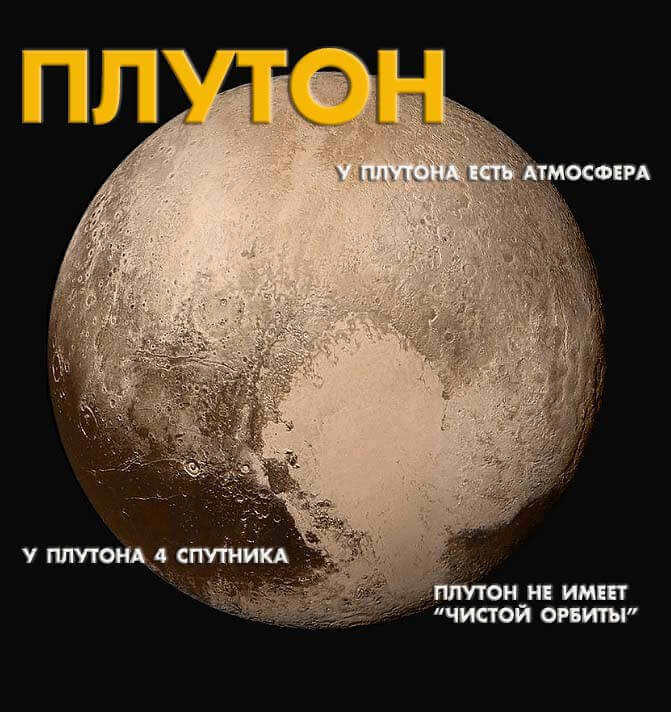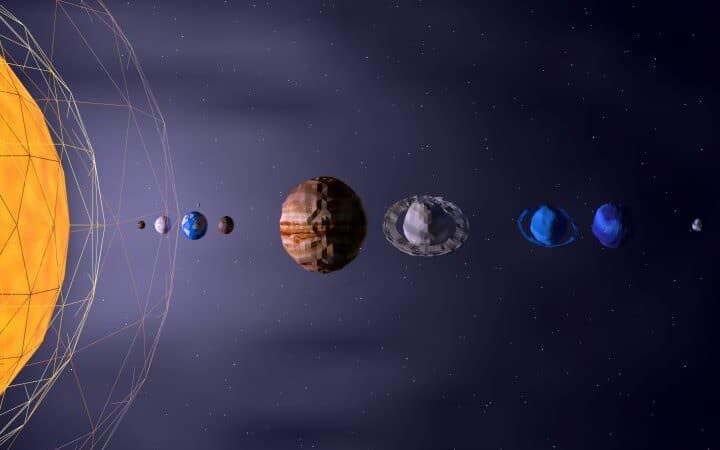Movies and TV shows featuring extraterrestrial beings have gained widespread popularity. It is always intriguing to witness the peculiarities of these characters, their extraordinary abilities, and their interactions with humans. Among these productions, there are some that offer a glimpse into the lives of people through the lens of fictional alien protagonists, allowing us to potentially relate to them. One of the most successful attempts at portraying earthlings in a comedic manner was the American sitcom “The Third Planet from the Sun,” which celebrated its 20th anniversary in 2016.
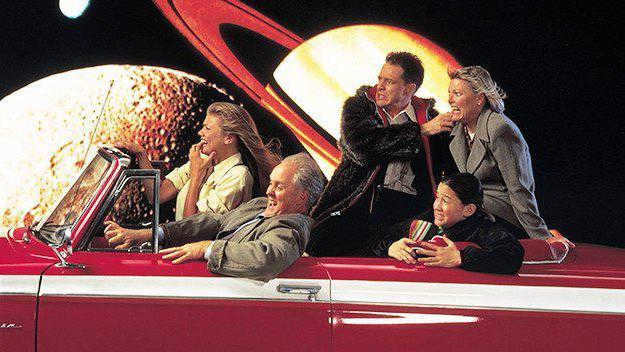

“The third planet from the sun”: cast, storyline, accomplishments
When it first aired in 1996, the sitcom about extraterrestrials was expected to be just another fleeting show that would quickly fade into obscurity. However, the opposite proved to be true. Over the course of 6 seasons, this series garnered a massive following of American and international viewers, and went on to win numerous prestigious awards.
This remarkable success can be attributed to the boundless imagination of the directors and screenwriters, as well as the unwavering dedication of the ensemble cast, of which “The Third Planet from the Sun” takes great pride.
The main characters of the sitcom were portrayed by actors J. Lithgow, K. Johnston, F. Stewart, and J. Gordon-Levitt. They played the roles of four extraordinary individuals – space aliens who came to Earth with a covert mission. Their objective was to thoroughly observe human life and the inhabitants of this planet. To accomplish this, they settled in a small town in Ohio, posing as a regular family. However, their peculiar behavior and their origin from another planet made them anything but ordinary.
Meet the Solomon family, the group of aliens that assumed this earthly surname:
- Dick, the patriarch of the clan, is a brilliant physics professor at a local university (should I mention that he possesses an encyclopedic knowledge of physics?). He also serves as the supreme leader of the entire expedition.
- Sally, the sister of the patriarch, is a former security officer who now cleverly disguises herself as a stunning blonde.
- Harry, another officer, holds the vital role of chief communications officer, responsible for relaying updates from the aliens to their planet’s ruler, the Big Giant Head.
- Tommy, the oldest among his kind on his home planet but the youngest on Earth, is a teenager who grapples with all the typical challenges of adolescence.
Experiencing minor yet relatable challenges for humans, but perplexing and alarming for extraterrestrials, the quartet of protagonists successfully establish connections, acquire emotions, and gradually transform into individuals. Each night, as they sit atop the roof of their abode and contemplate the celestial expanse, they deliberate on the essence of humanity.

“The Third Planet from the Sun”: cast and characters
Who better to lead the family than the already established actor John Lithgow? This renowned actor joined the sitcom at the age of 51, and since then he has accumulated an impressive collection of awards, including five Emmys and two Tonys. He has also been nominated for an Oscar, and his filmography boasts roles in popular movies and TV shows such as “Terms of Endearment”, “Dexter”, and “Interstellar”.
Kristen Johnston, who won the hearts of the audience with her portrayal of Sally Solomon, may not have achieved the same level of success as her fellow cast members from “The Third Planet from the Sun”. However, she has made appearances in episodic roles in shows like “Sex and the City”, “American Family”, and “ER”, among others. Nevertheless, her performance in the alien sitcom earned her two Emmy Awards, which she truly deserves.
French Stewart, who played the most hilarious character in the series, seamlessly embodied the role. It’s no surprise – Stewart has appeared in numerous comedy films such as “Stargate”, “Stopping Time”, “Home Alone 4”, “Castle”, “Days of Our Lives”, and many more.
However, the young star of the show “The Third Planet from the Sun” can boast of the most fame. Actors with promising futures often showcase their talents at a young age, and Joseph Gordon-Levitt is no exception. He has gained well-deserved popularity through his roles in major films like “Inception”, “Life is Beautiful”, “Snowden”, and others.
As per the audience, the casting and character assignments in the TV show “The Third Planet from the Sun” have been done exceptionally well.
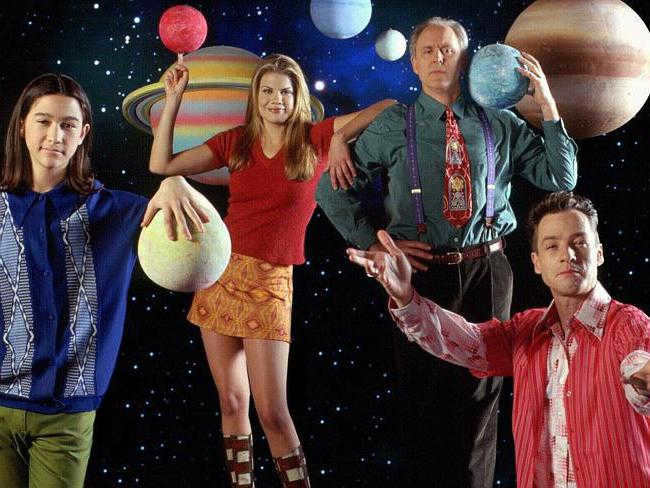
Dick Solomon
The actors in the TV show “Third Planet from the Sun” played a significant role in developing the characters. John Lithgow’s exceptional acting skills brought brightness and originality to the character of Dick Solomon, showcasing his comedic talent.
Dick Solomon is portrayed as a tall, choleric professor who is sometimes naive. He combines egotism, smugness, and a childlike demeanor. He develops a relationship with his “coworker” Mary Albright.
Lithgow’s superb performance directly contributes to the hilarity of this character.
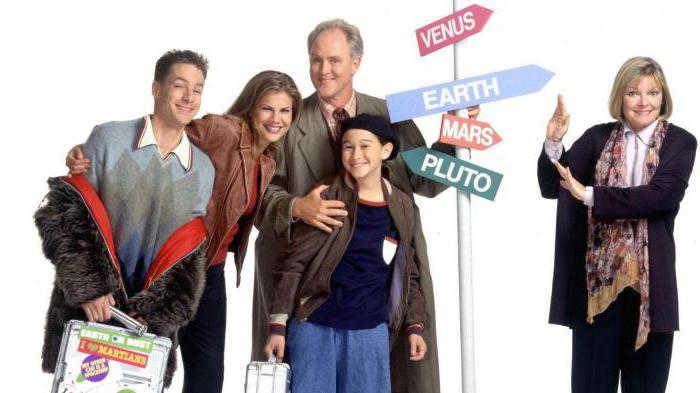
Sally Solomon
Sally Solomon, the sister of Dick and a former lieutenant, is a dedicated warrior. When she finds herself in the body of a stunning blonde, she experiences a great deal of discomfort, especially when she starts attracting the attention of men. However, as time goes on, Sully realizes that being a woman isn’t all that bad, and there are many advantages to it. She tries to embrace all the aspects of femininity, but her military background, roughness, and immense strength still make themselves evident.
Despite her inherently masculine nature, Sally begins to discover new feelings that were previously incomprehensible to her. She even starts a romantic relationship with a policeman.
Harry Solomon
Harry Solomon, a 30-year-old dimwit who used to be an officer, is known for his foolishness and perpetually squinting eyes. Within the Solomon family, he serves as a conduit, connecting them to the leadership of their home planet.
Harry’s comical antics and air of detachment make him the most amusing character. Surprisingly, despite his absurdity, he is quite popular with women.
Tommy Solomon
It is fascinating to witness the emergence of talent in another actor – Joseph Gordon-Levitt, who portrayed the character of Tommy as a teenager. Despite being the oldest and wisest member of the space expedition in his past, Tommy transforms into an ordinary high school student.
His new acquaintances quickly recognize that Tommy possesses a level of intelligence and wisdom that surpasses his years. However, within his new family, he is treated like a child. Naturally, Tommy feels confused by this and attempts to assert his true identity to his family more frequently. He grapples with the typical challenges of adolescence, such as navigating puberty, romantic relationships, and friendships.

The TV show “The Third Planet from the Sun” has gained popularity due to its talented actors, unique characters, and an intriguing yet simple storyline. This beloved sitcom is widely recognized and can be enjoyed by viewers of all ages. It is a heartwarming and humorous film that offers wholesome entertainment for the entire family.
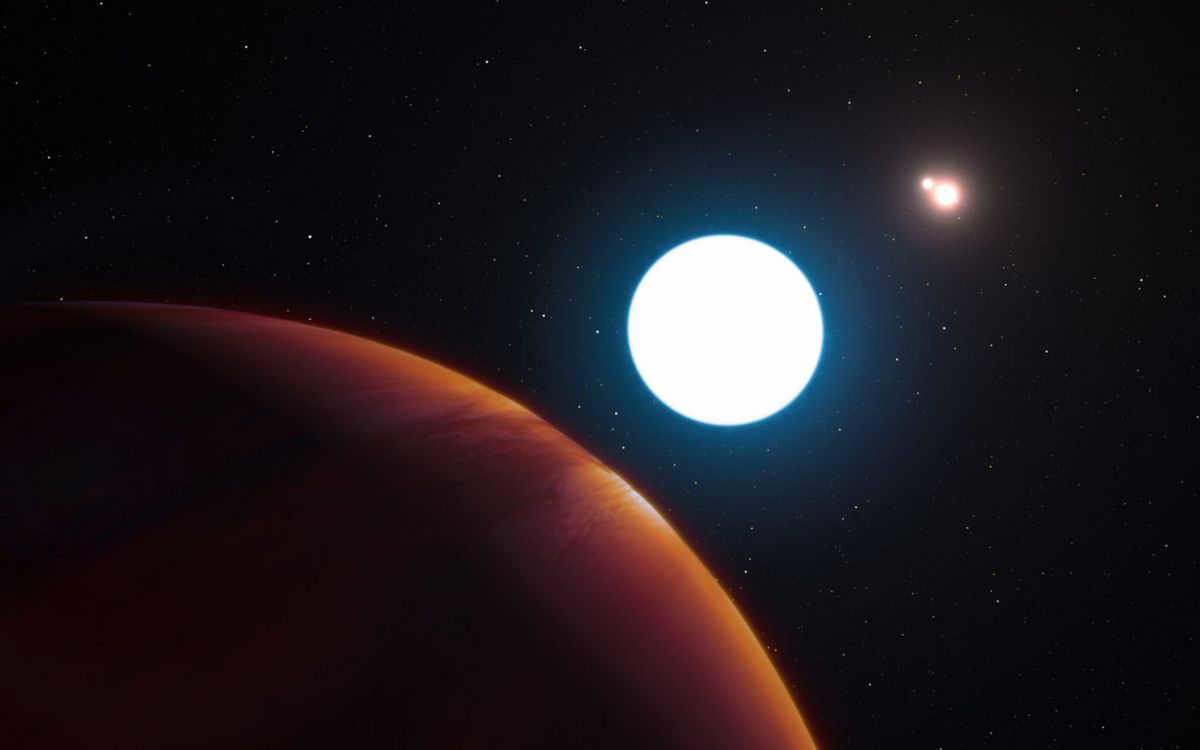
In the immense expanse of the cosmos, stars do not always traverse the celestial realm solitarily or in duos. Certain stars congregate to form trinary systems, where three stellar bodies elegantly encircle one another. These celestial arrangements, with their intricate interplays, have captivated astronomers for countless years. The inquiry remains: can planets prosper within these intricate systems?
What is a triple system?
A triple system is a stellar arrangement where three stars revolve around each other. While most star systems consist of two stars (binary systems), these “triple-solar” systems are quite prevalent in our galaxy, and each possesses a rather intricate gravitational setup.
The majority of these systems exhibit a hierarchical structure, with two stars orbiting one another and the third star located farther away, circling the inner pair. Alternatively, all three stars may revolve around each other at equal distances. Nevertheless, the gravitational forces exerted by each star influence the orbits of the others, resulting in perturbations and alterations in the orbital arrangements over time. This raises the question: is it possible for planets to form within these triple systems? The answer is affirmative.
A distant case of 340 light years away
A couple of years ago, NASA made public the detection of a planet called HD 131399Ab. Situated in the Centauri constellation, HD 131399Ab is a mere sixteen million years old, making it one of the most recently discovered exoplanets.
Based on observations and modeling, a possible scenario is as follows: at the heart of the system resides HD 131399A, a star that is approximately 80% more massive than the Sun. This star orbits the remaining two stars, B and C, at a distance of roughly 300 astronomical units (A.E.), which is similar to the average distance between the Earth and the Sun. In this arrangement, stars B and C orbit each other akin to a dumbbell, with a separation distance that is comparable to the distance between our Sun and Saturn (as illustrated below). In this system, the planet HD 131399Ab orbits the central star A at a distance twice that of Pluto’s orbit around the Sun.
However, HD 131399Ab is not the sole planet in this particular system. Recently, scientists at the University of Texas at Arlington endeavored to compile a comprehensive list of all known objects in a similar configuration.
Out of the over 5,000 exoplanets that have been discovered so far, the majority of them revolve around a single star. From this pool, around one hundred planets have been found to orbit in binary pairs, and it is estimated that there are about thirty confirmed planets in triple systems. This accounts for roughly 0.5% of the total number of planets that have been identified.
The authors of these calculations point out that most of these worlds are similar in size to Jupiter and orbit stars that are relatively large. However, a small number of Earth-sized planets have also been detected. Additionally, it should be noted that the Kepler space telescope has been responsible for detecting the majority of these planets. Nevertheless, it is expected that the number of known systems will increase in the coming years, particularly with the help of the James Webb telescope.
Mars is a source of great fascination for scientists, who have been exploring the mysteries of this fourth planet for many years. The similarities between Mars and Earth have led scientists to believe that there may be a possibility of finding signs of extraterrestrial life on Mars.
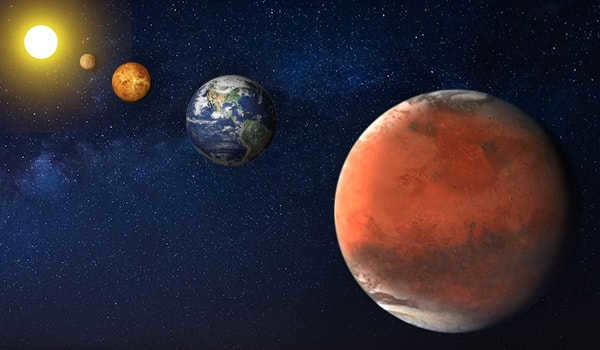
The arrangement of the planets in our solar system
In the solar system, there are a total of eight planets orbiting around the Sun. These celestial bodies are categorized based on various criteria:
- Distance from the Sun.
- Size.
- Group classification. The first four objects closest to the Sun are known as terrestrial planets, while the remaining planets are referred to as gas giants.
Gas giants, also known as outer planets, differ from their terrestrial counterparts not only in terms of size, but also in terms of their composition. The primary constituents of the two largest gas giants are helium and hydrogen. Neptune and Uranus are slightly more complex, as they can be considered more as ice giants rather than gas giants. Hydrogen on these planets is mostly replaced by ice.
The Earth group
The composition of Earth-like planets is primarily made up of metals and silicates. Refractory minerals form the crust and mantle, while metals make up the core.
The smallest member of this system, Mercury, experiences constant changes in its position, speed, and distance from the Sun. It lacks any moons and its close proximity to the Sun results in extreme temperature differences, ranging from +350 to -170 ᵒC. Notably, Mercury does not possess an atmosphere.
Venus, although further from Mercury, has a surface temperature over 100 ᵒC higher. Its radius and mass are similar to that of Earth. A day on Venus lasts 243 Earth days, and a year is equivalent to 224.7 Earth days. Venus has no moons.
Earth is the third planet in our solar system, located at an average distance of 93 million miles from the Sun. A unique characteristic of our home planet is the abundance of water, which covers approximately 70% of its surface area. Beneath the Earth’s crust, there are constantly moving lithospheric plates, which contribute to geological activity and the formation of various landforms.
One of Earth’s natural companions is the Moon, which orbits around our planet. The Moon is Earth’s only natural satellite and has played a significant role in shaping its surface and influencing tidal movements.
As for Mars, it is the fourth planet from the Sun and is often referred to as the “Red Planet” due to its reddish appearance. Unlike Earth, Mars has a very thin atmosphere, which consists mainly of carbon dioxide. The mass of Mars is only about 10% of Earth’s mass, and it takes approximately 687 Earth days for Mars to complete one orbit around the Sun.
Mars also has two natural satellites, Deimos and Phobos, which are believed to be captured asteroids. These moons orbit around Mars and contribute to the unique characteristics of this planet.
The fourth planet from the Sun
Have you ever wondered what the planet that is fourth in line from the Sun is called? It’s quite simple – Mercury is the closest planet to the Sun, Venus is the second, Earth is the third, and Mars is the closest neighbor to Earth, making it the fourth planet in the solar system.
Mars, being the fourth planet from the Sun, has received a lot of attention in the study of our vast star system. It shares many similarities with our own planet, Earth. Some areas on Mars have temperatures that are comparable to the Arctic regions on Earth.
Mars also experiences phenomena that are familiar to us, such as dust whirlwinds and sandstorms. However, these occurrences are ten times stronger and more intense than what we experience on Earth. One of the closest similarities to Earth is the angle of Mars’ axis and the time it takes for a complete revolution. This is why Mars also experiences seasons, just like Earth.
Mars, the fourth planet from the Sun, has an orbit radius that is half the size of Earth’s. It is positioned based on its distance from the Sun. In terms of size, Mars ranks second to last out of the seven planets.
Being the fourth planet from the Sun, Mars has a significant amount of carbon dioxide in its atmosphere, with solid deposits found at the poles. However, due to the low atmospheric pressure, liquid water cannot exist on the planet’s surface. It is possible, though, that water in the form of ice exists deep below the surface.
Mars, the fourth planet from the Sun, is accompanied by two satellites, Deimos and Phobos. These celestial bodies are composed of rock and have a similar structure to meteorites. Phobos is continuously moving closer to the planet, and in millions of years, it will either collide with the surface or be pulled in by gravity.
The local terrain on Mars is diverse, with volcanic craters, canyons, and flat surfaces. One notable feature is Olympus, a mountain that holds the distinction of being the tallest in the entire solar system. Scientists have speculated that the presence of alleged riverbeds indicates the possibility of past life on the planet. It is also known that geological activity has ceased long ago, leaving the planet motionless.
The planet is known as the Red Planet because of its characteristic color, which is caused by the main component of its surface, iron oxide. It is also named after the Roman god of war, who was worshipped by the ancient Romans.
Since as early as 1880, science fiction writers have been captivated by the mysterious allure of the fourth planet and have vividly described its wonders in their books. Foreign cinema has also contributed to the fascination with Mars, creating visually stunning movies based on these successful novels. One common theme found in both books and movies about Mars is the belief in the existence of a higher extraterrestrial intelligence.
Mars remains one of the great enigmas of the universe and holds immense potential for humanity. With each new revelation, we inch closer to uncovering evidence that we are not alone in this vast cosmos.
Did you find this information helpful? Show your support on social media!
Have you ever wondered about the origins of the names of the planets in our Solar System?
There is one planet whose name’s origin remains a mystery to mankind. Prepare to be surprised by the answer…
The celestial bodies within our solar system.
Our current understanding of the solar system includes a total of 8 known planets. However, recent scientific discoveries have brought forth the possibility of a ninth planet, yet to be formally named. For the sake of clarity, we will focus solely on the existing eight planets. The outer group consists of Neptune, Uranus, Saturn, and Jupiter, which are characterized by their immense size and their position further from the sun. The terrestrial inner group includes Mars, Earth, Venus, and Mercury.
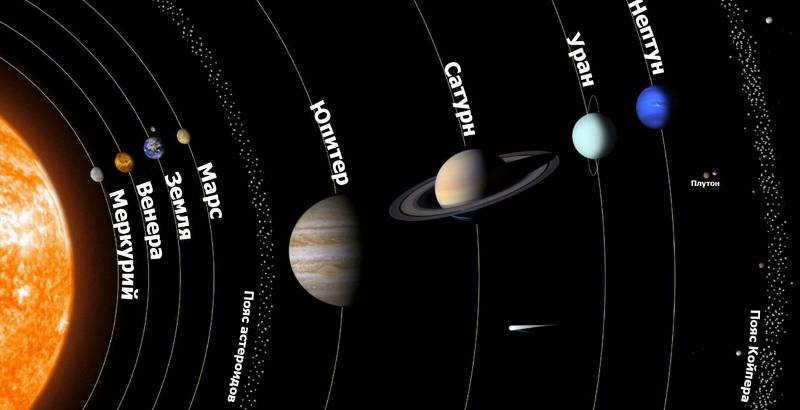
Prior to 2006, Pluto was officially recognized as a planet within our solar system, but extensive exploration of outer space has resulted in a shift in our understanding of this celestial body. It is now classified as the largest known object in the Kuiper belt and is referred to as a dwarf planet. The discovery and naming of Pluto can be traced back to 1930, when it was first observed and named by Venetia Burney, a young student from Oxford. In a vote among astronomers, her suggestion to name the planet after the Roman god associated with the underworld and death was chosen.
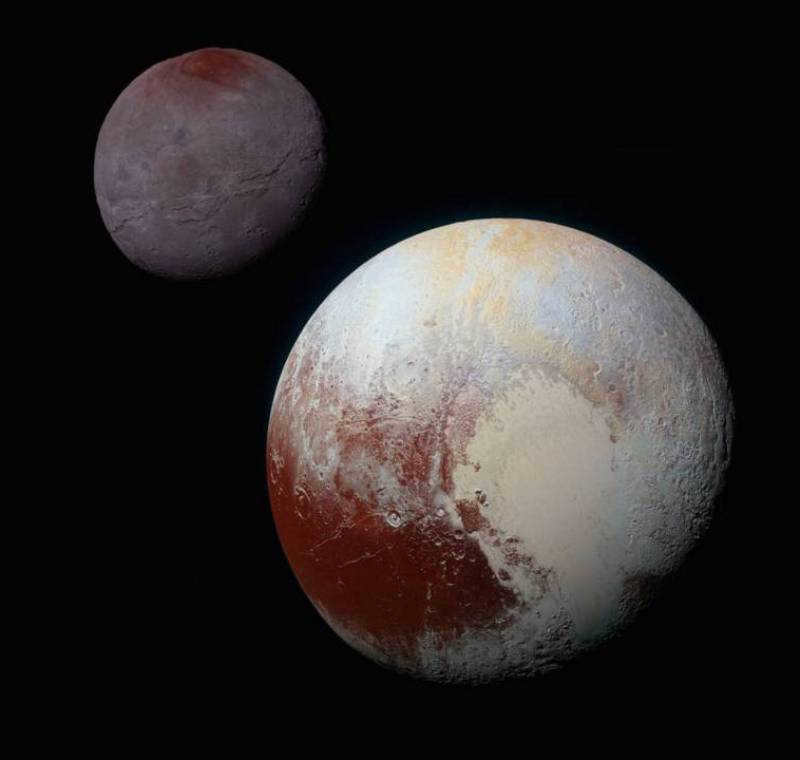
The planet Pluto and its companion Charon.
The discovery of this cosmic body occurred in the mid-19th century (1846), when mathematicians John Couch Adams and Urbain Jean Joseph Leverrier made calculations that led to its identification. The naming of this newly found planet sparked a debate among astronomers, as each of them desired to have their surname immortalized in its name. To settle the dispute, a compromise solution was proposed – the name of the ancient Roman god of the seas.
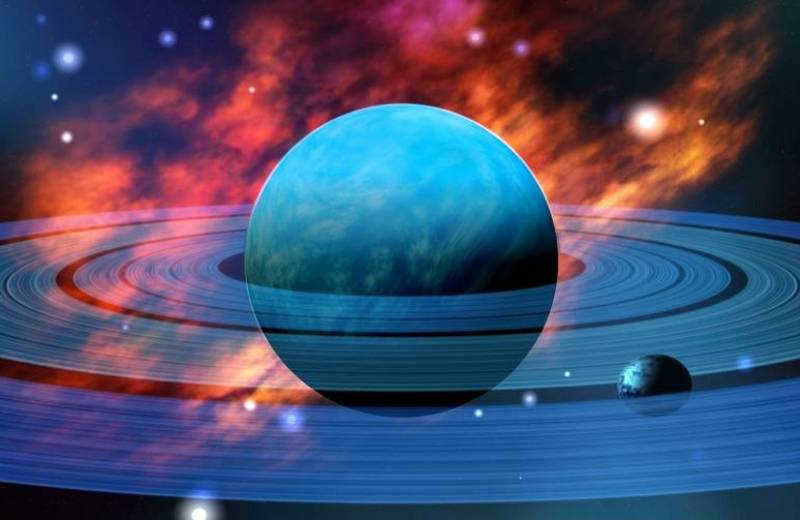
Neptune is the designation of one of the celestial bodies within our solar system.
The planet originally went by several different names. It was first observed in 1781 and was subsequently named after its discoverer, W. Herschel. Herschel himself initially wanted to honor the British monarch, George III, but astronomers suggested following the tradition of the other five ancient planets and giving it a “divine” name. The top contender for this name was the Greek god of the sky, Uranus.
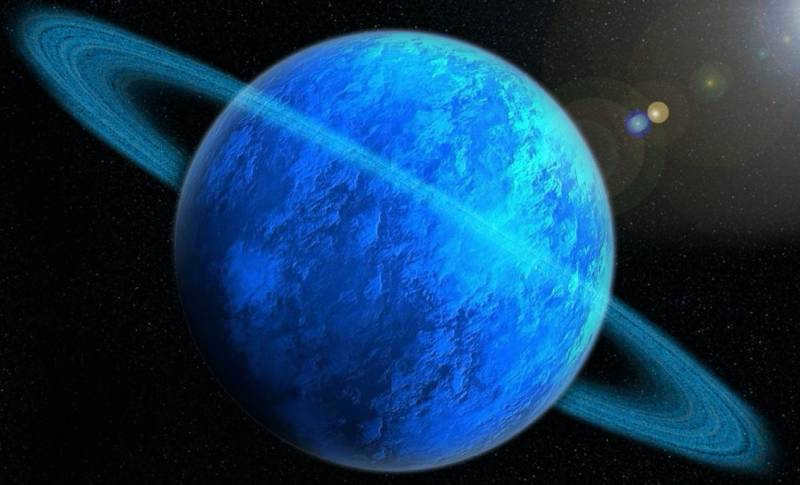
The presence of the colossal planet was already recognized during the time before the rise of Christianity. Opting for a suitable appellation, the Romans ultimately settled on the deity associated with the cultivation of crops.
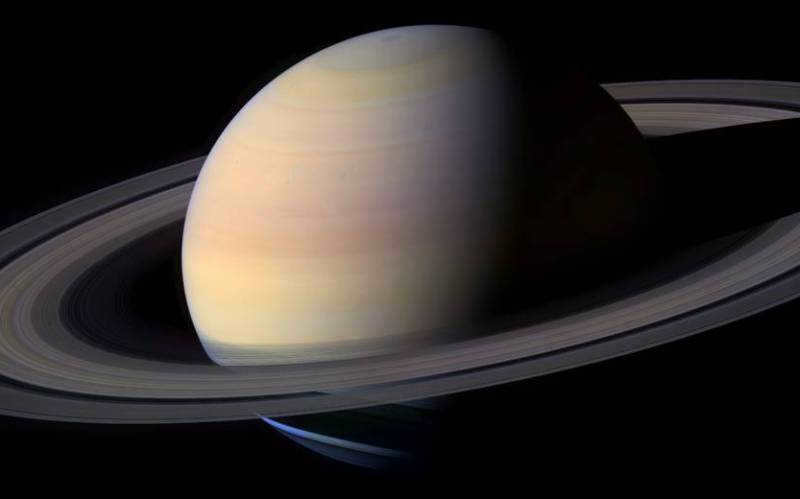
The planet in our solar system that is the largest and bears the name of the Roman supreme god is Jupiter. This massive planet has been known to humanity for centuries, as its grandeur is easily observable in the night sky, much like its celestial sibling, Saturn.
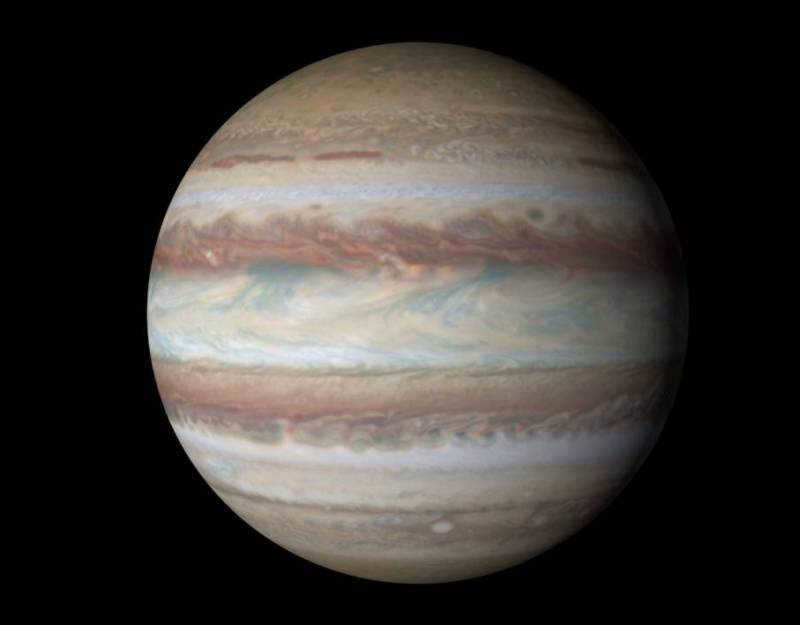
The planet’s surface has a distinct reddish color, which is often associated with violence and bloodshed. It is this characteristic that led the Romans to name this celestial body after their god of war.
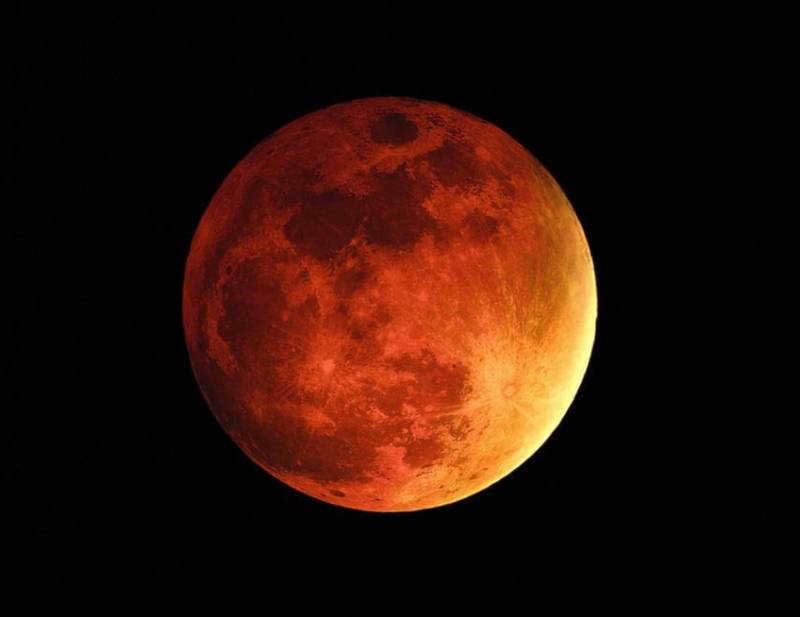
There is very little information available about the origin of the name of our home planet. It is likely that its name is not connected to any mythological references. The earliest recorded mention of the current name of the planet dates back to 1400. It is believed to be derived from the Anglo-Saxon term for soil or ground – “Earth.” However, the specific individual who first referred to the planet as “earth” remains unknown.
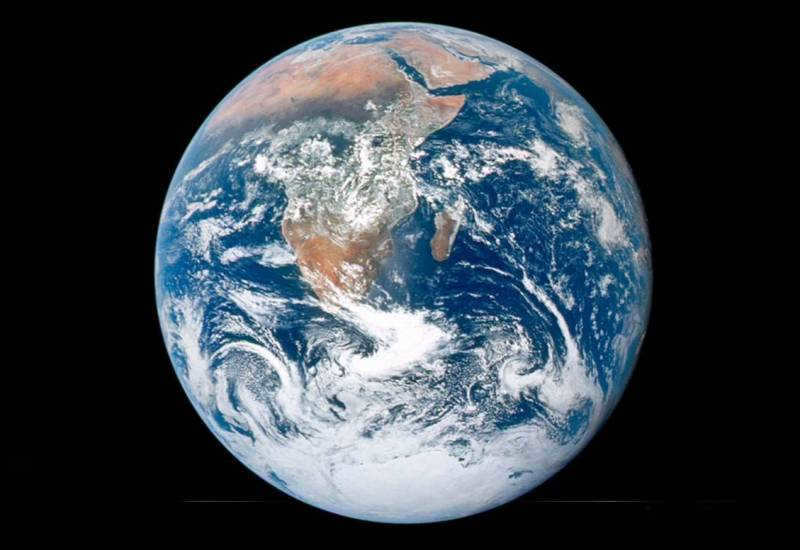
The Solar System consists of the Sun and its orbiting planets, as well as other celestial objects such as meteorites, asteroids, and comets.
Within this system, some planets are positioned closer to the Sun while others are located further away. However, all of these space bodies follow their own unique paths around the Sun, which boasts a mass that is a thousand times greater than the combined mass of all other celestial bodies in the Solar System.
There are a total of eight planets within the Solar System, categorized into two groups – inner and outer planets.
The terrestrial planets
The terrestrial planets, also known as the inner planets, consist of Mercury, Venus, Earth, and Mars. They possess solid surfaces and are relatively small in size. Mercury, being the closest to the Sun, experiences extreme temperature fluctuations, freezing at night and being scorched by the Sun’s rays during the day.
Mercury holds the title for the fastest-moving planet in the solar system. Venus, on the other hand, bears striking similarities to Earth in terms of size and brightness. However, its surface is a barren expanse of rocks. The planet’s dense cloud cover makes it challenging to observe Venus.
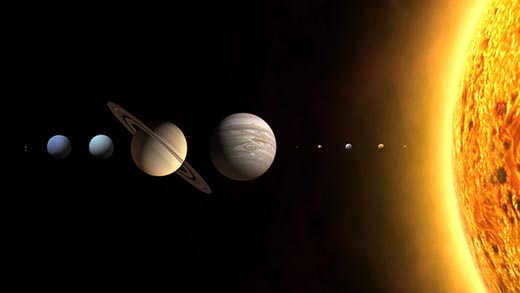
The Earth is the sole planet in the solar system that harbors life. Our planet is situated at an optimal distance from the Sun, ensuring that it does not scorch under its rays, yet does not freeze due to inadequate heat and light. Scientists posit that, akin to other planets, the Earth formed from a conglomeration of gas and dust.
Once the surface temperature reached a scorching five thousand degrees, the planet began to cool, resulting in the formation of a solid rocky layer, known as the Earth’s crust. However, closer to the Earth’s core, temperatures remain exceedingly high, with periodic eruptions of scorching lava originating from the planet’s deep interior. Additionally, Earth is distinguished as the only planet in the solar system that possesses water.
Scientists have long held the belief that life could potentially exist on Mars, as it is in close proximity to Earth and shares many similar characteristics. However, this hypothesis has yet to be confirmed by spacecraft missions to the red planet.
The immense size of the gas giants
Jupiter, Saturn, Uranus, and Neptune, the four outer planets, are significantly larger and more massive than the inner planets. For instance, Jupiter has a diameter ten times greater than Earth, a mass three hundred times greater, and a volume 1300 times greater. These gas giants are primarily composed of hydrogen and other gases.
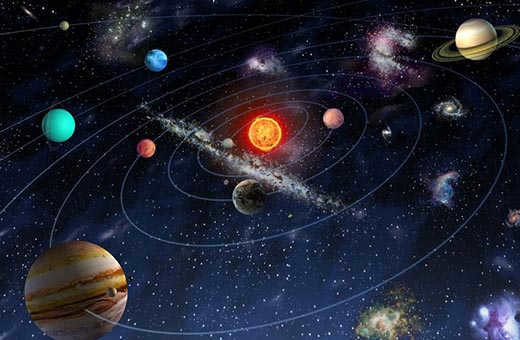
Jupiter is twice as heavy as the combined weight of all the other planets in the solar system. The second largest planet in the system is Saturn. It is easily identifiable in illustrations due to the presence of its rings, which consist of dust, rocks, and ice that orbit around it. These rings, known as “Saturn’s rings,” have a thickness of approximately 30 meters and a diameter of 270 thousand kilometers.
Scientists describe Uranus as unique because it orbits the Sun in a sideways manner. Uranus also possesses rings, although they cannot be observed by astronomers without the aid of specialized equipment. The existence of the rings around Uranus was discovered in 1986 when the spacecraft “Voyager-2” flew at a distance of 64 thousand kilometers above the planet and captured photographs.
Neptune, which is located farthest from the Sun, was initially discovered through mathematical calculations before it was observed through a telescope. In 1989, Voyager 2 captured images of Neptune and its moon Triton.
Formerly a Planet
At one point, the Solar System consisted of nine planets, but this changed in 2006 when Pluto was reclassified as a “dwarf planet.”
This reclassification occurred because the International Astronomical Union reevaluated the criteria for classifying planets. The main requirements for planetary status include orbiting the Sun, having sufficient mass to form a spherical shape due to its own gravity, and having a clear orbital path free of other celestial bodies.
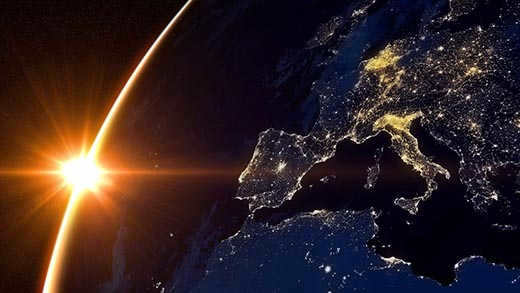
The third requirement implies that the planet must act as a dominant force of gravity, with no other objects of similar size nearby, except for its own satellites or other celestial bodies that fall under its gravitational influence.
However, it was discovered that Pluto does not meet this third requirement: its mass is only 0.07 of the total mass of all objects in its orbit. In other words, it was not a dominant force of gravity, and therefore lost its planetary status.
Consequently, in September 2006, Pluto and Erida, along with Erida’s satellite Dysnomia, were classified as minor planets.
Our place of residence in the vastness of the universe is the Solar System, an assembly of eight planets and a fraction of the Milky Way Galaxy. Situated at its core is a celestial body known as the Sun. The age of our solar system is estimated to be around four and a half billion years. Our humble abode is located on the third planet from the Sun. Would you like to acquaint yourself with the other planets that form the solar system?! We are more than happy to provide you with a brief introduction to each of them.
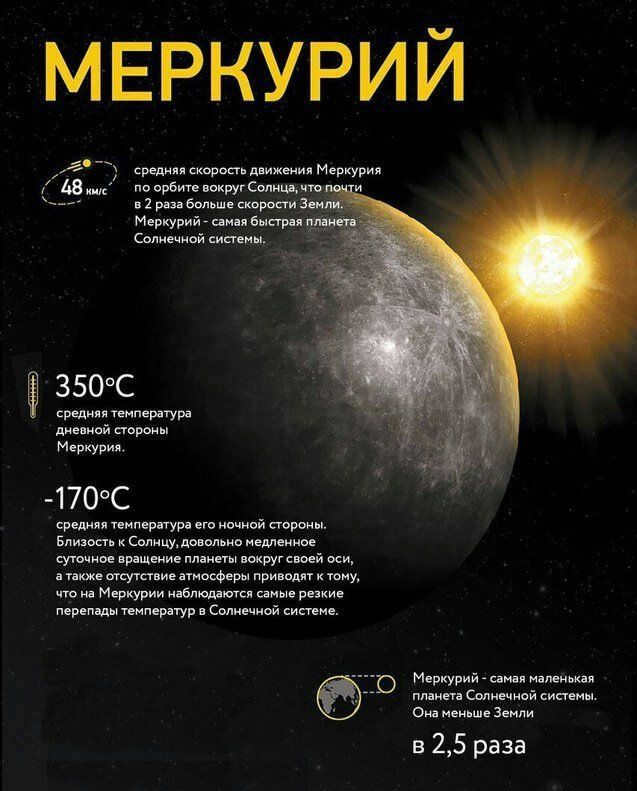
Mercury is the tiniest planet in our solar system. It has a radius of 2440 kilometers. The time it takes for Mercury to complete one orbit around the sun is 88 Earth days. Within this period, Mercury only rotates on its own axis one and a half times. A single day on Mercury lasts approximately 59 Earth days. The orbit of Mercury is known to be highly unstable, with changes not only in its speed and distance from the Sun, but also in its position. It does not have any natural satellites.
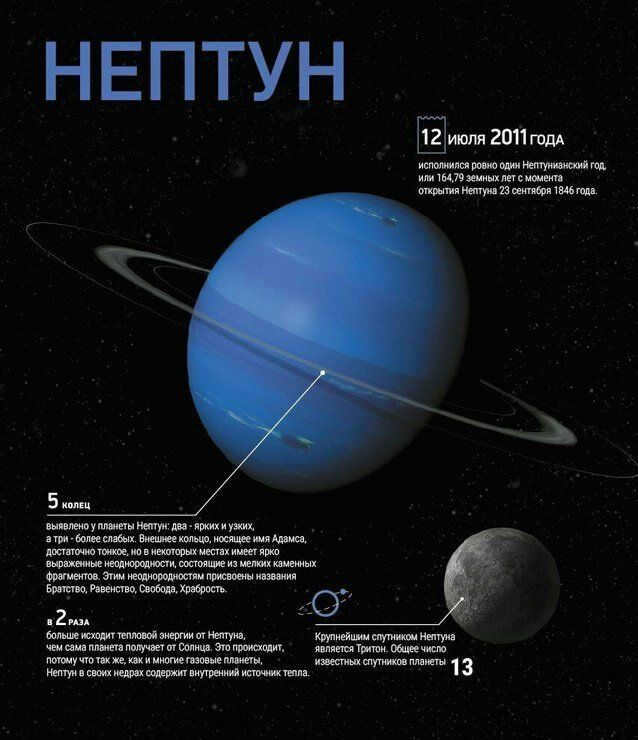
Neptune is the eighth planet in our solar system, located in close proximity to Uranus. With a radius of 24,547 kilometers, Neptune is known for its impressive size. A year on Neptune lasts a staggering 60,190 days, equivalent to approximately 164 Earth years. Additionally, this planet boasts an impressive 14 satellites. Notably, Neptune’s atmosphere is renowned for its extreme weather conditions, including the strongest recorded wind speeds of up to 260 meters per second. Interestingly, Neptune’s discovery was not made through direct observation, but rather through intricate mathematical calculations.
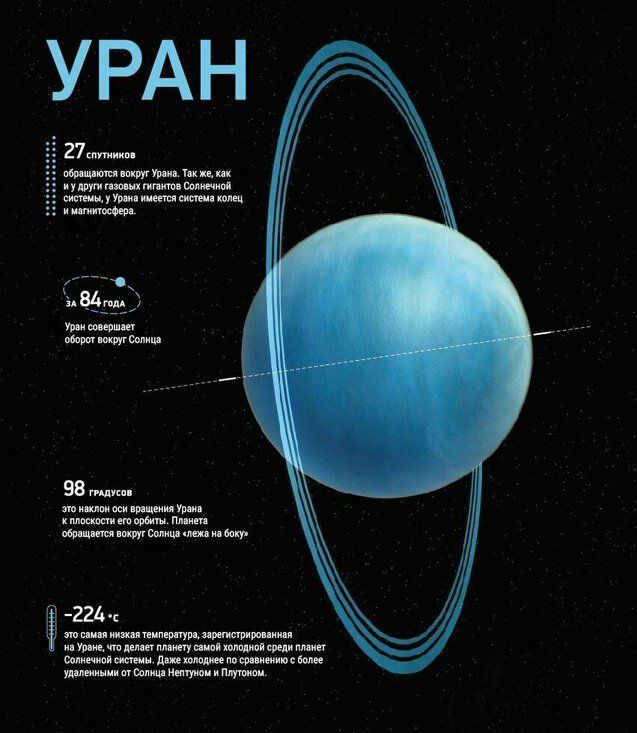
Uranus is the seventh celestial body in our Solar System. It boasts a radius of 25267 kilometers. This fascinating planet holds the title for being the chilliest with a surface temperature of an astonishing -224 degrees. In terms of its orbital period, Uranus completes a full revolution around the Sun in approximately 30,685 Earth days, which is equivalent to roughly 84 years. Furthermore, a day on Uranus lasts a mere 17 hours. Interestingly, this remarkable planet is accompanied by 27 satellites.
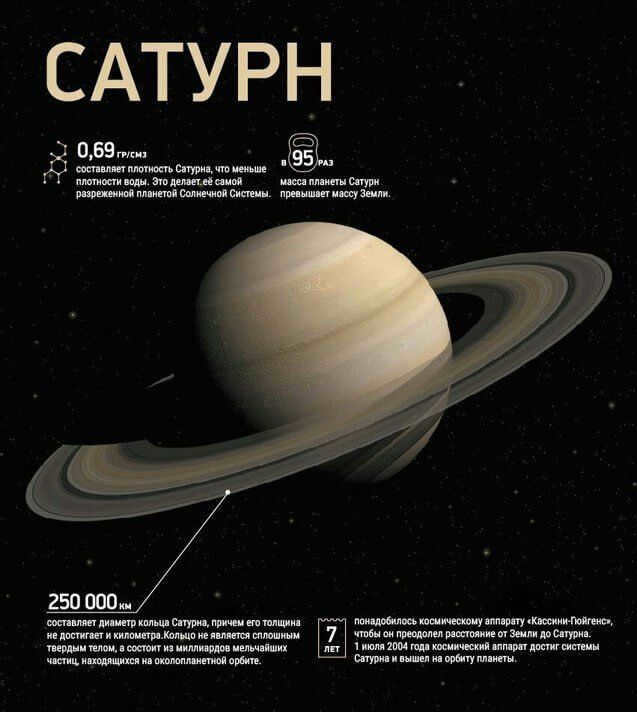
Saturn is the sixth planet in our solar system. It has a radius of 57350 kilometers, making it the second largest planet after Jupiter. The length of a year on Saturn is equivalent to 10759 days, which is nearly 30 Earth years. A day on Saturn is approximately 10.5 Earth hours, similar to a day on Jupiter. Saturn is most closely resembling the Sun in terms of its chemical composition. Additionally, it has a total of 62 satellites. However, the most notable characteristic of Saturn is its magnificent rings, the origin of which remains unknown.
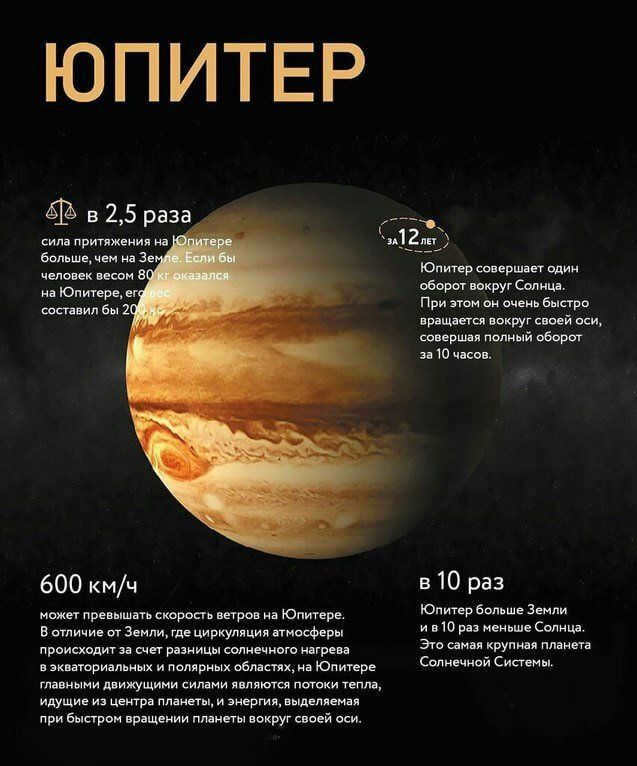
Jupiter is known as the fifth planet from the Sun. It holds the title for being the largest planet in our Solar System. With a radius of 69912 kilometers, Jupiter surpasses Earth’s size by 19 times. A year on Jupiter lasts approximately 4333 Earth days, which is equivalent to almost 12 Earth years. A day on Jupiter has a duration of about 10 Earth hours.
Jupiter boasts an impressive number of 67 satellites. Among these satellites, the notable ones include Callisto, Ganymede, Io, and Europa. Ganymede, the largest of them all, is even 8% larger than Mercury, the smallest planet in our solar system, and even possesses an atmosphere.
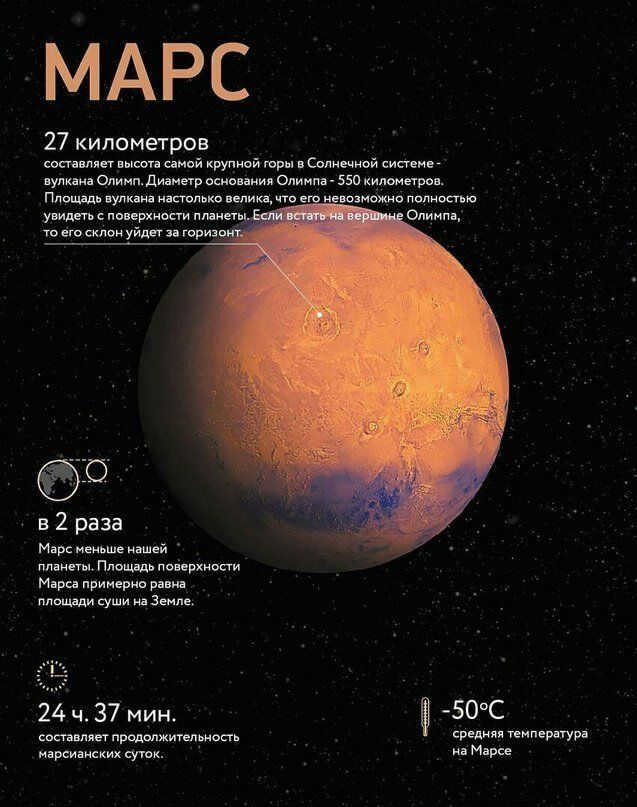
Mars is the fourth planet in our solar system, with a radius of 3,390 kilometers, which is about half the size of Earth. A Martian year lasts 687 Earth days, and the planet has two moons, Phobos and Deimos.
Its atmosphere is thin, and evidence of water on certain parts of the surface indicates the possibility of past or even current existence of primitive life on Mars.
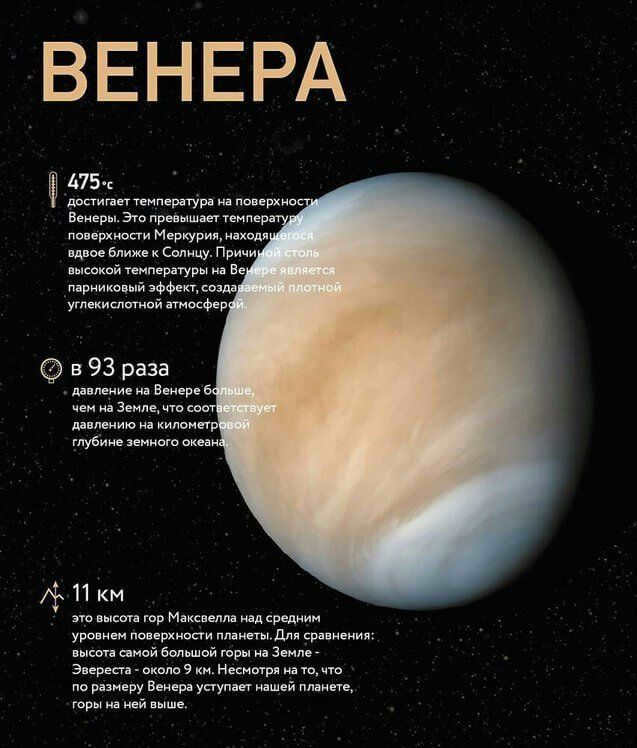
Venus is the second planet in our solar system. It has a similar mass and radius to Earth, but lacks any natural satellites.
Venus’ atmosphere is predominantly composed of carbon dioxide, with approximately 96% of the atmosphere consisting of this gas. Nitrogen makes up about 4% of the atmosphere, while water vapor and oxygen are present in very small quantities. The combination of gases in Venus’ atmosphere creates a greenhouse effect, resulting in surface temperatures that can reach a scorching 475 °C. A day on Venus lasts 243 Earth days, while a year on Venus is equivalent to 255 Earth days.
